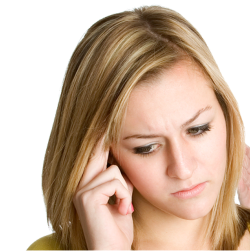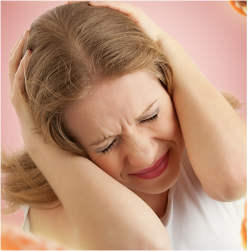 The author, Robbert Goddard, once said, “There must be something to acupuncture – you never see any sick porcupines.”
The author, Robbert Goddard, once said, “There must be something to acupuncture – you never see any sick porcupines.”
While that might be a funny quote, acupuncture has been shown to be very effective at treating migraines for many people.
Acupuncture is one of those treatment methods that many people don’t understand and for that reason, don’t believe in it either. Yet, we should always strive to keep an open mind and give it a try. Don’t knock it unless you have tried it.
Treating Migraines with Acupuncture
Acupuncture is a holistic method of treatment and just like most holistic treatments; it will take time for its efficacy and benefits to be seen. You can’t cure your migraines overnight with acupuncture but over time after repeated sessions, you will notice that you get migraine headaches less often and when you do get them, they will be less intense.
Thousands of people with migraines have benefited from acupuncture. Yet, this is not a perfect solution for everyone. In fact, nothing is perfect for everyone. You will have to try it for yourself and see how it affects you. Does it help? Or are the efforts an exercise in futility? This will depend on your body.
Either way, if you do not try, you will not know.
What truly matters is that you find a qualified acupuncturist to treat you. Since it is a Chinese form of alternative medicine, in most cases, the advanced practitioners will most probably be Chinese. You may find them with practices in the major cities. They can be relatively difficult to find in the smaller communities.
Acupuncture Can Work Well with Other Migraine Remedies
Acupuncture for migraines should be used together with medication, a nutrient rich diet, relaxation techniques, natural remedies, etc. It is not a one-stop solution. You should think of it more as one of the tools that you are using in conjunction with other tools to battle migraines.
It would be unwise to skip on your prescribed pain medication for migraines just because you are going for acupuncture. These are not mutually exclusive treatments. Go ahead and take the beta blockers the doctor gave you and go for your acupuncture sessions too.
Many people expect miraculous results from acupuncture and when they do not see changes overnight, they automatically assume that it’s all a fake and “in the mind”. You must have patience and exercise common sense which is often not so common.
How Long to See Migraine Relief with Acupuncture Treatments?
Studies have shown that people who went for 10 acupuncture sessions over the duration of six weeks had positive effects. Their migraines occurred less frequently, for shorter durations and were less painful. The acupuncture was as effective as the beta blockers that doctors traditionally prescribe.
The way acupuncture works is by inserting needles into various points in the body. As scary as this might sound, it’s often painless. The aim of acupuncture is to correct imbalances within the body. Once this is achieved, the body will be stronger and less prone to health problems such as migraines. That summarizes the theory of acupuncture.
In reality, millions have benefited from acupuncture that has been used to treat a variety of disorders from infertility to even respiratory conditions. So, this is a method of treatment that can be highly effective. You will just need to give it a try and see if it helps you.


 That’s a fair question indeed. How do you know that the headaches you are having are migraines and not just normal headaches?
That’s a fair question indeed. How do you know that the headaches you are having are migraines and not just normal headaches?
 It’s a proven fact that women are 3 times more prone to migraines. If that wasn’t bad enough, menstruation also has an impact on migraines. Some women have the worst of both worlds between typical migraines and menstrual migraines combined.
It’s a proven fact that women are 3 times more prone to migraines. If that wasn’t bad enough, menstruation also has an impact on migraines. Some women have the worst of both worlds between typical migraines and menstrual migraines combined.
 The Good and Bad News of Ocular Migraines
The Good and Bad News of Ocular Migraines
 Migraines affect millions of people and women are three times more likely to get migraines than men. Despite so many migraineurs in society today, modern medicine is no closer to a cure. In fact, most doctors and scientists are unable to even figure out why migraines occur.
Migraines affect millions of people and women are three times more likely to get migraines than men. Despite so many migraineurs in society today, modern medicine is no closer to a cure. In fact, most doctors and scientists are unable to even figure out why migraines occur.
 We’ve all had it before…
We’ve all had it before…
 In the US alone, there are about 30 million people suffering from migraines. The majority of this group is women since they are 3 times more likely than men to get migraine headaches. This is a very common condition and it is so painful that many sufferers often feel like life is not worth living when they are in such immense pain.
In the US alone, there are about 30 million people suffering from migraines. The majority of this group is women since they are 3 times more likely than men to get migraine headaches. This is a very common condition and it is so painful that many sufferers often feel like life is not worth living when they are in such immense pain.
 Migraine sufferers are constantly looking for ways and means to prevent migraines from occurring. The pain from these headaches can be so bad that their daily life is affected and they are no able to function properly due to the suffering.
Migraine sufferers are constantly looking for ways and means to prevent migraines from occurring. The pain from these headaches can be so bad that their daily life is affected and they are no able to function properly due to the suffering.
 Migraines are possibly one of the very few problems that makes taking a hammer to your own skull seem an appropriate solution. They are uncomfortable, painful and can feel debilitating if the headaches are intense enough.
Migraines are possibly one of the very few problems that makes taking a hammer to your own skull seem an appropriate solution. They are uncomfortable, painful and can feel debilitating if the headaches are intense enough.
 Migraines are one of those conditions that most people wouldn’t wish on their worst enemy… or maybe they would. These are headaches that are so bad that people suffering from them feel debilitated and often cannot do anything else except sit down and wait for the pain to go away.
Migraines are one of those conditions that most people wouldn’t wish on their worst enemy… or maybe they would. These are headaches that are so bad that people suffering from them feel debilitated and often cannot do anything else except sit down and wait for the pain to go away.